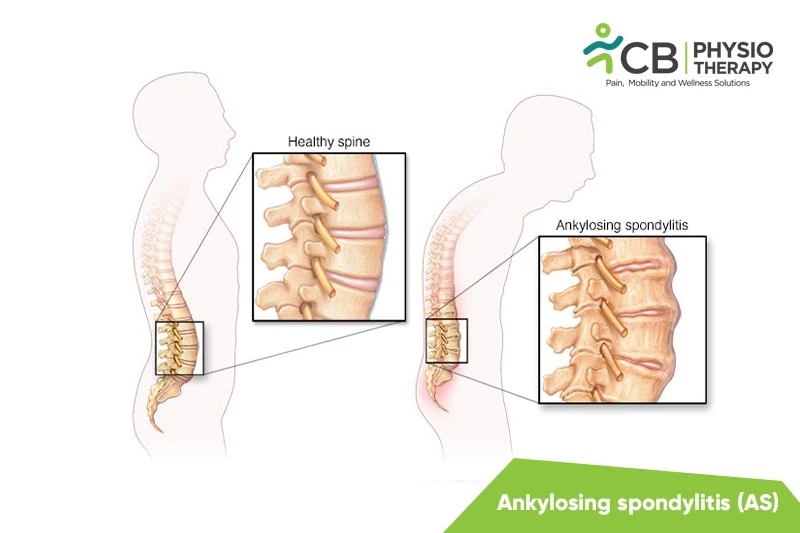
Ankylosing spondylitis (AS) causes inflammation of the sacroiliac joints located between the base of the spine (vertebrae) and pelvis. Inflammation is one of the first signs of AS, which often spreads to joints between the vertebrae, the bones that make up the spinal column. This condition is known as spondylitis. This fusing makes the spine less flexible and can result in a hunched posture, it also affects the ribs and can be difficult to breathe deeply. There is no cure for ankylosing spondylitis, but treatments can lessen symptoms and possibly slow the progression of the disease.
Early signs and symptoms of ankylosing spondylitis might include:
AS has no known specific cause, though genetic factors and genetic links may be one of the causes. Other causes may be:
Pathology:
Initially, the inflammation of the synovium occurs, which commonly starts, from the sacroiliac joints followed by the other region of the spine. It causes the cartilage of the joint to get destroyed and becomes rough and bony erosion occurs. Finally leading to the formation of new bones in these areas, and bridging takes place between the vertebral bodies, usually from the edge of one body to the next, along the outer layer of the disc.
The patient is asked to stay active and do exercises to help ease pain, maintain flexibility and improve posture. The patient is also advised to quit smoking, as smoking is generally bad for the health, as it further hampers breathing. Also, practicing standing straight in front of a mirror can help avoid some of the problems associated with ankylosing spondylitis.
Select your City to find & connect with our experts regarding Physiotherapy for Ankylosing Spondylitis (as)